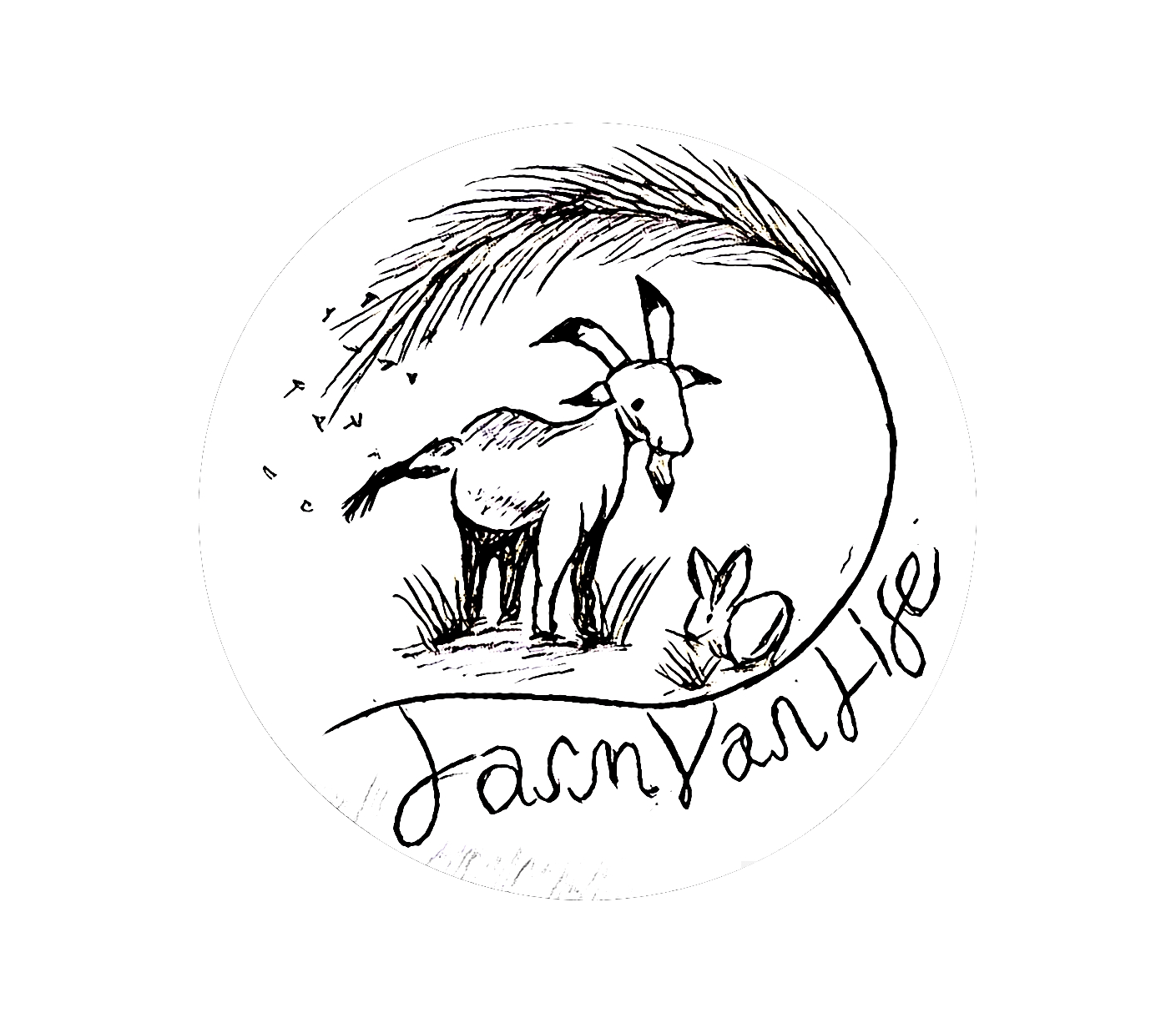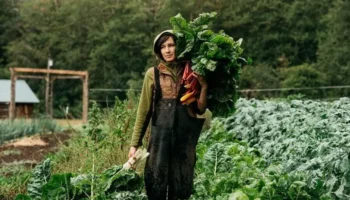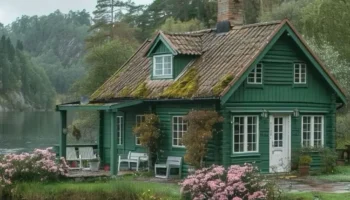Whether life is better in the countryside depends on individual preferences and priorities. Both the countryside and urban areas offer unique advantages and challenges. After answering “what is the countryside?” in short, we list these advantages and challenges as well as a daily routine in the countryside.
Watching hundreds of videos on the countryside, you may think that life is much better in the countryside.
However, though there are good sides of living in the countrysides, there are also some negative aspects of that. First of all, let’s start with the definition of countryside to give you a better picture of such a life.
What is the countryside?
The countryside refers to rural areas that are outside of cities and towns, characterized by open spaces, farmland, forests, and small villages or scattered houses. It is typically less densely populated than urban areas, with more natural landscapes, fewer buildings, and a slower pace of life.
Key Characteristics of the Countryside
- Natural Environment: The countryside often includes fields, forests, rivers, lakes, and other natural features. It is common to see wildlife and vegetation that is less present in urban areas.
- Agriculture: Farming, livestock, and other forms of agriculture are common in the countryside. Also, this is where much of the world’s food is grown and produced.
- Low Population Density: Compared to cities, fewer people live in the countryside, leading to more space between homes and larger properties.
- Villages and Small Towns: Instead of high-rise buildings or sprawling urban centers, the countryside typically features small towns or villages with a few local shops, schools, and community centers.
- Peace and Quiet: The countryside is generally much quieter than cities, with less traffic, noise, and light pollution.
- Limited Infrastructure: While cities have extensive public transportation, hospitals, and entertainment venues, the countryside may have fewer of these services, requiring residents to travel to nearby towns or cities for certain needs.
The countryside offers a lifestyle that’s often associated with simplicity, nature, and tranquility, contrasting with the fast-paced, industrialized, and densely populated environment of cities. Would you like to explore more aspects of countryside living, such as advantages and disadvantages of there? Then, let’s go on reading! Here are some factors to consider when weighing the benefits of rural life.
Advantages of Living in the Countryside
- Peace and Quiet: Fewer people, less traffic, and less noise pollution create a calmer, more serene environment.
- Natural Surroundings: Proximity to nature, open spaces, fresh air, and beautiful landscapes often enhances a sense of well-being.
- Lower Cost of Living: In many places, housing and daily expenses are more affordable in rural areas compared to cities.
- Sense of Community: Smaller populations may foster close-knit communities, where people know each other well, so social bonds are strong.
- Space: Larger homes and plots of land allow for gardens, outdoor activities, and privacy.
- Less Stress: The slower pace of life can reduce stress levels compared to the often hectic urban lifestyle.
Challenges of Living in the Countryside
- Limited Access to Services: Rural areas may have fewer healthcare facilities, schools, shops, and entertainment options.
- Job Opportunities: Employment may be limited, especially in specialized industries. Some people may need to commute long distances for work.
- Isolation: While some enjoy the quiet, others may feel isolated due to fewer social opportunities and greater distances between neighbors.
- Infrastructure: Public transport, internet connectivity, and road conditions may not be as developed as in urban areas.
- Fewer Cultural and Social Activities: Cities often offer more events, restaurants, cultural institutions, and social opportunities.
Countryside is ideal for:
- Nature lovers
- People seeking peace and quiet
- Those looking for a slower, less stressful pace of life
- People who work remotely or in agriculture
Life in the countryside can be more relaxed, but it may not be suitable for everyone, especially if access to certain amenities, career opportunities, or social experiences is essential. Would you consider living in a rural area, or do you feel more inclined toward city life? To answer this, let’s discover the daily life in the countryside.
Daily life in the countryside
Daily life in the countryside tends to be slower-paced, more connected to nature, and focused on practical routines. Here is a typical snapshot of what daily life might look like in a rural area.
1. Morning Routine
- Early Start: Many people in the countryside start their day early, especially those involved in farming or outdoor work. Farmers might begin with feeding animals, milking cows, or preparing fields for planting.
- Nature: The mornings are often peaceful, with birds chirping, mist over fields, and natural beauty all around. Many people enjoy walks, gardening, or simply appreciating the quiet surroundings.
- Homemade Breakfast: Meals might be prepared with homegrown or locally sourced ingredients like fresh eggs, vegetables, or homemade bread.
2. Work and Activities
- Farming and Agriculture: For those who work in agriculture, the day could involve tending to crops, harvesting, feeding livestock, or maintaining equipment.
- Outdoor Jobs: Some might work in forestry, fishing, or rural trades like carpentry or building. Jobs are often hands-on and closely connected to the land.
- Remote or Commuting Work: With increasing remote work opportunities, some countryside residents have jobs that they can do from home, using the internet. Others may commute to nearby towns for jobs in shops, schools, or other businesses.
- Household Chores: Many people grow their own food, so gardening and maintaining small vegetable patches or orchards can be part of the daily routine. Keeping up with household chores, firewood gathering, and basic repairs also fills the day.
3. Community and Social Interaction
- Village Life: The countryside often has a strong sense of community. People may visit local markets, small shops, or cafés, where they meet neighbors and friends. Local fairs, farmers’ markets, or village events are common.
- Socializing: Neighbors may stop by for a chat, or people gather at the local pub or church. Life tends to be more communal, with a greater emphasis on personal connections.
- Volunteer Work: In some communities, people contribute time to local organizations, such as community centers, schools, or environmental projects.
4. Leisure and Relaxation
- Outdoor Activities: You may spend afternoons by walking in nature, hiking, cycling, or fishing. Many rural residents enjoy being outside and taking part in activities that allow them to connect with nature.
- Gardening: Tending to flowers, vegetables, or fruit trees is a popular and rewarding pastime in rural areas.
- Crafts and Hobbies: People in the countryside often have more time for creative pursuits, such as knitting, painting, woodworking, or baking. These activities not only bring joy but also produce practical items.
- Reading and Rest: With fewer distractions, evenings may be spent quietly reading, spending time with family, or relaxing around a fire.
5. Evening Routine
- Home-Cooked Dinner: Dinners are often made from scratch using fresh, local ingredients. Many rural families place a strong emphasis on preparing homemade meals.
- Quiet Evenings: With fewer social or entertainment options nearby, evenings are often quieter. People might enjoy stargazing, playing board games, or simply unwinding after a day of outdoor work.
6. Seasonal Rhythm
- Seasonal Changes: Life in the countryside is often deeply connected to the seasons. In spring, planting crops or gardens begins; in summer, there may be more outdoor work and long days. Fall brings harvesting and preparing for winter, while winter may involve more indoor activities and rest, with many people enjoying cozy fireside time.
7. Challenges and Practicalities
- Self-Sufficiency: Many people in rural areas are more self-sufficient. They might grow their own food, raise chickens or other animals, and do much of their own home maintenance or repairs.
- Distance from Services: Residents may need to travel to the nearest town for medical services, shopping, or other amenities. Planning ahead and maintaining vehicles is also important in these areas.
Overall, daily life in the countryside revolves around a close connection to nature, practical tasks, and a slower, more reflective pace. There is a sense of independence and self-reliance, but also a strong community spirit. We hope that you can decide on whether life in the countryside is better than life in cities after reading this lovely post. Whichever you choose, enjoy it!





